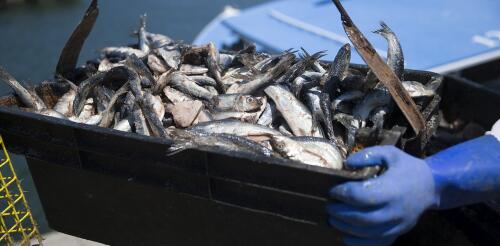US Supreme Court
Federal Chevron deference is dead. On June 28, 2024, in a 6-3 vote, the Supreme Court overturned the 40-year-old legal tenet that when a federal statute is silent or ambiguous about a particular regulatory issue, courts should defer to the implementing agency’s reasonable interpretation of the law. The reversal came in a ruling on two fishery regulation cases, Loper Bright Enterprises v. Raimondo and Relentless, Inc. v. Department of Commerce. This decision means that federal courts will have the final say on what an ambiguous federal statute means. What’s not clear is whether most courts will still listen to expert federal agencies in determining which interpretations make the most sense. While courts and judges will vary, as a scholar in environmental law, I expect that the demise of Chevron deference will make it easier for federal judges to focus on the exact meaning of Congress’ individual words, rather than on Congress’ goals or the real-life wor...
Wetlands aren’t the most eye-catching ecosystems. They include swamps, bogs, fens and other places where soil is covered by water most of the time. But they perform a huge range of valuable services, from soaking up floodwaters to filtering out pollutants and providing habitat for thousands of species of mammals, fish, reptiles, insects and birds. In a high-profile 2023 ruling, Sackett v. Environmental Protection Agency, the U.S. Supreme Court greatly limited federal power to protect wetlands. According to one estimate, this ruling stripped federal protection from up to 90 million acres of wetlands across the U.S. Today, the U.S. is losing wetlands, mainly to development and agriculture, at an accelerating rate. With Congress polarized and gridlocked, new federal wetland protection laws are unlikely to be enacted in the next several years. Some states have stepped up to fill the gap, but others have instead chosen to roll back their existing protections. This comes despit...
Electric power generation in the U.S. is shifting rapidly away from fossil fuels toward cleaner and lower-carbon sources. State clean energy targets and dramatic declines in the cost of renewable electricity are the most important reasons. But fossil fuel plants still generate 60% of the U.S. electricity supply, producing air, water and land pollutants and greenhouse gases in the process. To reduce these impacts, the Environmental Protection Agency announced a suite of rules on April 25, 2024. They focus mainly on coal plants, the nation’s most-polluting electricity source. As an environmental lawyer who has been in practice since the early 1970s, I believe these curbs on power plant pollution are long overdue. The new rules close loopholes in existing laws that have allowed coal-fired power plants to pollute the nation’s air and water for decades. And they require utilities to drastically slash these plants’ greenhouse gas emissions or close them down. Oppon...
The Supreme Court heard oral argument on Jan. 17, 2024, in two cases that center on fisheries management, but could have broad impacts on federal regulatory power. The question at the core of Loper Bright Enterprises v. Raimondo and Relentless Inc. v. Department of Commerce is whether the Secretary of Commerce, acting through the National Marine Fisheries Service and following the Magnuson-Stevens Fishery Conservation and Management Act, can require commercial fishers to pay for onboard observers whom they are required to take on some fishing voyages. In both cases, the plaintiffs assert that the Commerce Department has exceeded its legal authority. That claim turns on how much deference the court should give the agency’s interpretation of the Magnuson-Stevens Act. The plaintiffs are challenging a nearly 40-year-old doctrine of federal administrative law, known as Chevron deference for the 1984 case in which it was set forth. This tenet provides that when a federal statu...
The Navajo Nation, the largest Native American reservation in the U.S., covers 27,000 square miles (70,000 square kilometers) in the Southwest – an area larger than 10 states. Today it is home to more than 250,000 people – roughly comparable to the population of St. Petersburg, Florida, or Winston-Salem, North Carolina. Unlike those cities, however, 30% of households on the Navajo Reservation lack running water. Hauling water can cost 20 times what it does in neighboring off-reservation communities. While the average American uses between 80 and 100 gallons (300-375 liters) of water per day, Navajo Nation members use approximately seven. Since the 1950s, the Navajo Nation has pressed the U.S. government to define the water rights reserved for them under the 1868 treaty that created their reservation. These efforts culminated in a U.S. Supreme Court case, Arizona v. Navajo Nation, which posed this question: Does the treaty between the Navajo Nation and the United S...




